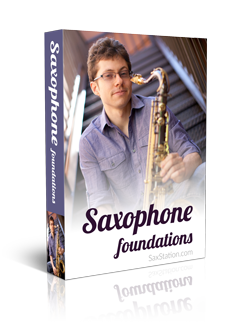You want to sound awesome when you solo on saxophone. Might realize that sounding great isn’t a simple matter though…..
Learning the melody to a song in a really solid way is a great start to being able to improvise with confidence and musicality.
Hence this lesson……
Herbie Hancock wrote a lot of great tunes.
Today we’re going over Cantaloupe Island. It’s a cool song, and it’s not super complicated. The goal is to get it solid, starting with the melody, learn the chord changes. Eventually, to be able to play it in all twelve keys if you’re ready to try that.
Here’s a live version, phrasing liberty in it. There’s a small phrase of embellishment at about 0:41 that you don’t need to worry about. But basically it sticks to the usual melody. It goes from 0:34 to 0:57.
The ‘all twelve keys’ bit really isn’t as scary as it sounds!
And you’ll just start with one key. Moving on from there is an option if you’re up to it. If not, don’t worry about it.
We’ll begin with the melody.
There are twelve notes in music.
But in Cantaloupe Island’s melody, there are only five notes.
And even more than that, those five notes are the five notes of a minor pentatonic scale.
If you’re familiar with the blues scale, the minor pentatonic scale has five of the seven notes that are in a blues scale.
Formula for the minor pentatonic scale:
1
-3 (minor 3)
4
5
-7 (minor 7)
For tenor and soprano saxophones, for Cantaloupe Island, those notes are:
G, Bb, C, D, F
For alto and baritone saxophones, for Cantaloupe Island, those notes are:
D, F, G, A, C
(The pentatonic scale will ‘fit’ as you solo over the song, it ‘fits’ the melody after all. But just using a minor pentatonic scale, like just using a blues scale, is not as interesting as it could be.)
The form of the melody for Cantaloupe Island is an ‘A’ section that repeats and then a ‘B’ section that repeats.
A Section:
1 1
-3 4 4
-3 4 5 -7 1
B Section:
5 -7
5 -7
1 1
In music classes at university, we used ‘solfege’ and the more I thought about it, solfege seems pretty useful in learning melodies (especially simple ones). Might be a bit harder for bebop, but you could probably still do it.
Note:
me = mi b
te = ti b
A Section:
do do
me fa fa
me fa so te do
B Section:
so te
so te
do do
Now that you know what the notes are, listen and figure out the nuances of the rhythm and phrasing. Listening is fundamental to learning music.
The version played by Herbie Hancock and his group with Joe Henderson on tenor saxophone and Freddie Hubbard on trumpet. Latin percussionist Poncho Sanchez plays another version on the next part of this lesson.
Listen to them and learn the melody, or refresh yourself on it and pay attention to the details so you personalize it more.
You can borrow stylistically from versions you hear and add them to your repertoire. It’s a good exercise to learn how to play it like one musician in particular, but you probably want to make it sound like you at some point.
Learning the melody before you solo will help you tremendously. It also gives you ideas to fall back on if you aren’t sure what to play. In older jazz they would embellish the melody in their improvisations. How are you going to embellish something you don’t really know?
There are three chords in the changes for Cantaloupe Island, we’ll go over that next.


